Video: “Wiping Gaza Off the Map”: Big Money Agenda. Confiscating Palestine’s Maritime Natural Gas Reserves
December 3rd, 2024 by Felicity Arbuthnot
To read translation into Arabic, scroll down AI
فيديو: “محو غزة من الخريطة”: أجندة المال الكبير. مصادرة احتياطيات فلسطين من الغاز الطبيعي البحري
لقراءة الترجمة إلى اللغة العربية، قم بالتمرير لأسفل
Introduction
Israel has launched an invasion (October 7, 2023) of the Gaza Strip.
As outlined by Felicity Arbuthnot with foresight 10 years ago in a December, 30 2013 article:
“Israel is set to become a major exporter of gas and some oil, “If All Goes to Plan”.
In the current context, Israel’s “All Goes to Plan” option consists in bypassing Palestine and “Wiping Gaza off the Map”, as well confiscating ALL Gaza’s maritime offshore gas reserves, worth billions of dollars.
The ultimate objective is not only to exclude Palestinians from their homeland, it consists in confiscating the multi-billion dollar Gaza offshore Natural Gas reserves, namely those pertaining to the BG (BG Group) in 1999, as well the Levant discoveries of 2013.
Update. Israel’s Secret Intelligence Memorandum
An official “secret” memorandum authored by Israel’s Ministry of Intelligence “is recommending the forcible and permanent transfer of the Gaza Strip’s 2.2 million Palestinian residents to Egypt’s Sinai Peninsula”, namely to a refugee camp in Egyptian territory. There are indications of Israel-Egypt negotiations as well as consultations with the U.S.
The 10-page document, dated Oct. 13, 2023, bears the logo of the Intelligence Ministry … assesses three options regarding the future of the Palestinians in the Gaza Strip … It recommends a full population transfer as its preferred course of action. … The document, whose authenticity was confirmed by the ministry, has been translated into English in full here on +972. See below, click here or below to access complete document (10 pages)
First published on October 22, 2023. Video added on October 27, 2023, Update, November 1, 2023
***
Video: Michel Chossudovsky, Interview with Caroline Mailloux, Lux Media
To leave a comment and/or Access Rumble click to lower right hand corner
Felicity Arbuthnot’s 2013 Analysis
“The Giant Leviathan natural gas field, in the eastern Mediterranean, discovered in December 2010, widely described [by governments and media] as “off the coast of Israel.”
These Levant reserves must be distinguished from those discovered in Gaza in 1999 by British Gas, which belong to Palestine. Felicity Arbuthnot’s analysis nonetheless confirms that “Part of the Leviathan Gas fields lie in Gazan territorial waters” (See Map Below).
Whilst Israel claims them as her very own treasure trove, only a fraction of the sea’s wealth lies in Israel’s bailiwick as maps. Much is still unexplored, but currently Palestine’s Gaza and the West Bank between them show the greatest discoveries… (Felicity Arbuthnot, 2013)

Flash Forward to October 2023
Netanyahu’s October 2023 declaration of war against 2.3 million people of the Gaza Strip is a continuation of its 2008-2009 invasion of Gaza under “Operation Cast Lead.”
The underlying objective is the outright military occupation of Gaza by Israel’s IDF forces and the expulsion of Palestinians from their homeland.
.
The ultimate objective is not only to exclude Palestinians from their homeland, it consists in confiscating the multi-billion dollar Gaza offshore Natural Gas reserves, namely those pertaining to the BG (BG Group) in 1999, as well the Levant discoveries of 2013.
Egypt-Israel “Secret Bilateral Talks”
In 2021-22, Egypt and Israel were involved in “secret bilateral talks” regarding “the extraction of natural gas off the coast of the Gaza Strip.
“Egypt succeeded in persuading Israel to start extracting natural gas off the coast of the Gaza Strip, after several months of secret bilateral talks.
This development … comes after years of Israeli objections to extract natural gas off the coast of Gaza on [alleged] security grounds, …
British Gas (BG Group) has also been dealing with the Tel Aviv government.
What is significant is that the civilian arm of the Hamas Gaza government has been bypassed in regards to exploration and development rights over the gas fields:
The field, which lies about 30 kilometers (19 miles) west of the Gaza coast, was discovered in 2000 by British Gas (currently BG Group) and is estimated to contain more than 1 trillion cubic feet of natural gas.
The official in the Egyptian intelligence service told Al-Monitor on condition of anonymity, “An Egyptian economic and security delegation discussed with the Israeli side for several months the issue of allowing the extraction of natural gas off the coast of Gaza. …Al-Monitor, October 22, 2022
A Memorandum of Understanding was signed between Egypt and Israel, which had the rubber-stamp of the Palestinian National Authority (PA):
“The Egyptian official explained that Israel required the start of practical measures to extract gas from the Gaza fields at the beginning of 2024, to ensure its own security. (Al-Monitor, October 22, 2022
Netanyahu’s Timeline: “Before The Beginning of 2024”
The timeline resulting from these bilateral Israel-Egypt “secret talks” i.e. confiscation of Palestine’s offshore Maritime Gas Reserves is “The Beginning of 2024”.
United Nations Assessment
An important United Nations Conference on Trade and Development (UNCTAD) (2019) report describes Palestine’s predicament as follows:
Geologists and natural resources economists have confirmed that the Occupied Palestinian Territory lies above sizeable reservoirs of oil and natural gas wealth, in Area C of the occupied West Bank and the Mediterranean coast off the Gaza Strip.
However, occupation continues to prevent Palestinians from developing their energy fields so as to exploit and benefit from such assets. As such, the Palestinian people have been denied the benefits of using this natural resource to finance socioeconomic development and meet their need for energy.
The accumulated losses are estimated in the billions of dollars. The longer Israel prevents Palestinians from exploiting their own oil and natural gas reserves, the greater the opportunity costs and the greater the total costs of the occupation borne by Palestinians become.
This study identifies and assesses existing and potential Palestinian oil and natural gas reserves that could be exploited for the benefit of the Palestinian people, which Israel is either preventing them from exploiting or is exploiting without due regard for international law. (UNCTAD, August 2019, emphasis added, download complete report)
Crimes against Humanity
In the words of Netanyahu who is on Record for Supporting and Financing a faction within Hamas:
“Anyone who wants to thwart the establishment of a Palestinian state has to support bolstering Hamas and transferring money to Hamas … This is part of our strategy – to isolate the Palestinians in Gaza from the Palestinians in the West Bank.”
(Benjamin Netanyahu, statement at a March 2019 meeting of his Likud Party’s Knesset members, Haaretz, October 9, 2023, emphasis added)
“Hamas was treated as a partner to the detriment of the Palestinian Authority to prevent Abbas from moving towards creating a Palestinian State. Hamas was promoted from a terrorist group to an organization with which Israel conducted negotiations through Egypt, and which was allowed to receive suitcases containing millions of dollars from Qatar through the Gaza crossings.”
(Times of Israel, October 8, 2023, emphasis added)
Crimes against humanity beyond description by the Netanyahu government against the People of Palestine,
Crimes also committed against the People of Israel who are the victims of the Hamas “False Flag Attack” carefully engineered by Mossad-IDF.
There are deep-seated divisions within Hamas. Our “False Flag” analysis pertains to a military-intelligence faction within Hamas which cooperates with Israeli and U.S. intelligence. See:
By , October 20, 2023
Michel Chossudovsky, Global Research, October 21, 2023
Below is the 2013 article by Felicity Arbuthnot
Israel Gas-Oil and Trouble in the Levant
by Felicity Arbuthnot
Global Research,
December 13, 2013
Israel is set to become a major exporter of gas and some oil, if all goes to plan. The giant Leviathan natural gas field, in the eastern Mediterranean, discovered in December 2010, is widely described as “off the coast of Israel.”
At the time the gas field was:
“ … the most prominent field ever found in the sub-explored area of the Levantine Basin, which covers about 83,000 square kilometres of the eastern Mediterranean region.” (i)
Coupled with Tamar field, in the same location, discovered in 2009, the prospects are for an energy bonanza for Israel, for Houston, Texas based Noble Energy and partners Delek Drilling, Avner Oil Exploration and Ratio Oil Exploration.
Also involved is Perth, Australia-based Woodside Petroleum, which has signed a memorandum of understanding for a thirty percent stake in the project, in negotiations which have been described as “up and down.”
There is currently speculation that Woodside might pull out of the deal: “ …since the original plans to refrigerate the gas for export were pursued when relations between Israel and Turkey were strained. That has changed, more recently, which has opened the door for gas to be piped to Turkey.”
The spoils of the Leviathan field has already expanded from an estimated 16.7 trillion cubic feet (tcf ) of gas to nineteen trillion – and counting:
”We’ve discovered nearly 40 tcf of gas, and we have roughly 19 tcf of that gas that’s available for export to both regional and extra-regional markets. We see exports reaching 2 billion cubic feet a day in capacity in the next decade. And we continue to explore.”, stated Noble Vice Chairman Keith Elliot (ii) There are also estimated to be possibly six hundred million barrels of oil, according to Michael Economides of energytribune.com (“Eastern Mediterranean Energy – the next Great Game.”)
However, even these estimates may prove modest. In their: “Assessment of Undiscovered Oil and Gas Resources of the Levant Basin Province, Eastern Mediterranean”, the US Department of the Interior’s US Geological Survey, wrote in 2010:
“We estimated a mean of 1.7 billion barrels of recoverable oil and a mean of 122 trillion cubic feet of recoverable gas in this province using a geology based assessment methodology.”
Nevertheless, Woodside Petroleum, might also be hesitant to become involved in further disputes, since they are already embroiled, with the Australian government, in a protracted one in East Timor relating to the bonanaza of energy and minerals beneath the Timor Sea, which has even led to East Timor accusing Australia “of bugging East Timorese officials during the negotiations over the agreement.”(iii)
Woodside’s conflict in East Timor however, may well pale against what might well erupt over the Leviathan and Tamar fields. The area is not for nothing called the Levantine Basin.
Whilst Israel claims them as her very own treasure trove, only a fraction of the sea’s wealth lies in Israel’s bailiwick as maps (iv, v, see below) clearly show.
Much is still unexplored, but currently Palestine’s Gaza and the West Bank between them show the greatest discoveries, with anything found in Lebanon and Syria’s territorial waters sure to involve claims from both countries.
In a pre-emptive move, on Christmas Day, Syria announced a deal with Russia to explore 2,190 kilometres (850 Sq. miles) for oil and gas off its Mediterranean coast, to be: “… financed by Russia, and should oil and gas be discovered in commercial quantities, Moscow will recover the exploration costs.”
Syrian Oil Minister, Ali Abbas said during the signing ceremony that the contract covers “25 years, over several phases.”
Syria, increasingly crippled by international sanctions, has seen oil production plummet by ninety percent since the largely Western fermented unrest began in March 2011. Gas production has nearly halved, from thirty million cubic metres a day, to 16.7 cubic metres daily.
The agreement is reported to have resulted from “months of long negotiations” between the two countries. Russia, as one of the Syrian government’s main backers, looks set to also become a major player in the Levant Basin’s energy wealth. (vi)
Lebanon disputes Israel’s map of the Israeli-Lebanese maritime border, filing their own map and claims with the UN in 2010. Israel claims Lebanon is in the process of granting oil and gas exploration licenses in what Israel claims as its “exclusive economic zone.”
That the US in the guise of Vice President Joe Biden, as honest broker, acting peace negotiator in the maritime border dispute would be laughable, were it not potential for Israel to attack their neighbour again. In a visit to Israel in March 2010, Biden announced: “There is absolutely no space between the United States and Israel when it comes to Israel’s security- none at all”, also announcing on arrival in Israel:”It’s good to be home.”
Given US decades of “peace brokering” between Israel and Palestine, this is already a road of pitfalls, one sidedness and duplicity, well traveled. There is trouble ahead.
Oh, and in demonology, Leviathan is one of the seven princes of Hell.
Notes
i. http://www.offshore-technology.com/projects/leviathan-gas-field-levantine-israel/
ii. http://m.theage.com.au/business/options-widen-for-woodsides-leviathan-partners-20131219-2znu6.html
iii. http://www.abc.net.au/news/2013-09-04/east-timor-offers-funds-for-onshore- gas-processing/4933106
iv. http://www.offshore-technology.com/projects/leviathan-gas-field-levantine-israel/leviathan-gas-field-levantine-israel1.html
v. http://www.google.co.uk/search?q=Leviathan+gas+project+Israel+map&tbm=isch&tbo=u&source=univ&sa=X&ei=ntC2UvO7IcPE7Ab7rIDYCQ&ved=0CEQQsAQ&biw=1017&bih=598
vi. http://www.phantomreport.com/syria-inks-oil-gas-deal-with-russia-firm#more-20238
****
Michel Chossudovsky’s
Video: War and Natural Gas: The Israeli Invasion and Gaza’s Offshore Gas Fields
By , April 25, 2024
Almost fifteen years ago in December 2008, Israel invaded Gaza under “Operation Cast Lead (2008-2009)”.
The following article was first published by Global Research in January 2009 at the height of the Israeli bombing and invasion under Operation Cast Lead.
War and Natural Gas:
The Israeli Invasion and Gaza’s Offshore Gas Fields
by Michel Chossudovsky
January 8, 2009
The December 2008 military invasion of the Gaza Strip by Israeli Forces bears a direct relation to the control and ownership of strategic offshore gas reserves.
This is a war of conquest. Discovered in 2000, there are extensive gas reserves off the Gaza coastline.
British Gas (BG Group) and its partner, the Athens based Consolidated Contractors International Company (CCC) owned by Lebanon’s Sabbagh and Koury families, were granted oil and gas exploration rights in a 25 year agreement signed in November 1999 with the Palestinian Authority.
The rights to the offshore gas field are respectively British Gas (60 percent); Consolidated Contractors (CCC) (30 percent); and the Investment Fund of the Palestinian Authority (10 percent). (Haaretz, October 21, 2007).
The PA-BG-CCC agreement includes field development and the construction of a gas pipeline.(Middle East Economic Digest, Jan 5, 2001).
The BG licence covers the entire Gazan offshore marine area, which is contiguous to several Israeli offshore gas facilities. (See Map below). It should be noted that 60 percent of the gas reserves along the Gaza-Israel coastline belong to Palestine.
The BG Group drilled two wells in 2000: Gaza Marine-1 and Gaza Marine-2. Reserves are estimated by British Gas to be of the order of 1.4 trillion cubic feet, valued at approximately 4 billion dollars. These are the figures made public by British Gas. The size of Palestine’s gas reserves could be much larger.
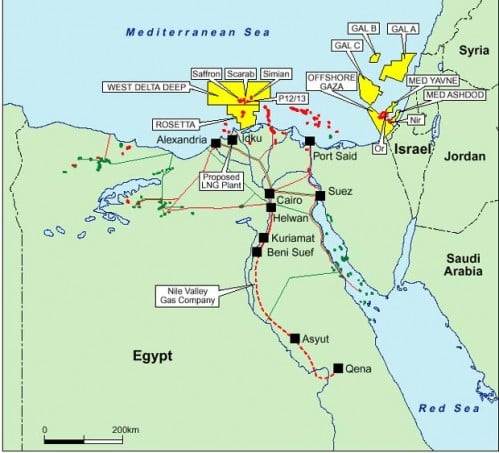
Map 1

Map 2
Who Owns the Gas Fields
The issue of sovereignty over Gaza’s gas fields is crucial. From a legal standpoint, the gas reserves belong to Palestine.
The death of Yasser Arafat, the election of the Hamas government and the ruin of the Palestinian Authority have enabled Israel to establish de facto control over Gaza’s offshore gas reserves.
British Gas (BG Group) has been dealing with the Tel Aviv government. In turn, the Hamas government has been bypassed in regards to exploration and development rights over the gas fields.
The election of Prime Minister Ariel Sharon in 2001 was a major turning point. Palestine’s sovereignty over the offshore gas fields was challenged in the Israeli Supreme Court. Sharon stated unequivocally that “Israel would never buy gas from Palestine” intimating that Gaza’s offshore gas reserves belong to Israel.
In 2003, Ariel Sharon, vetoed an initial deal, which would allow British Gas to supply Israel with natural gas from Gaza’s offshore wells. (The Independent, August 19, 2003)
The election victory of Hamas in 2006 was conducive to the demise of the Palestinian Authority, which became confined to the West Bank, under the proxy regime of Mahmoud Abbas.
In 2006, British Gas “was close to signing a deal to pump the gas to Egypt.” (Times, May, 23, 2007). According to reports, British Prime Minister Tony Blair intervened on behalf of Israel with a view to shunting the agreement with Egypt.
The following year, in May 2007, the Israeli Cabinet approved a proposal by Prime Minister Ehud Olmert “to buy gas from the Palestinian Authority.” The proposed contract was for $4 billion, with profits of the order of $2 billion of which one billion was to go the Palestinians.
Tel Aviv, however, had no intention on sharing the revenues with Palestine. An Israeli team of negotiators was set up by the Israeli Cabinet to thrash out a deal with the BG Group, bypassing both the Hamas government and the Palestinian Authority:
“Israeli defence authorities want the Palestinians to be paid in goods and services and insist that no money go to the Hamas-controlled Government.” (Ibid, emphasis added)
The objective was essentially to nullify the contract signed in 1999 between the BG Group and the Palestinian Authority under Yasser Arafat.
Under the proposed 2007 agreement with BG, Palestinian gas from Gaza’s offshore wells was to be channeled by an undersea pipeline to the Israeli seaport of Ashkelon, thereby transferring control over the sale of the natural gas to Israel.
The deal fell through. The negotiations were suspended:
“Mossad Chief Meir Dagan opposed the transaction on security grounds, that the proceeds would fund terror”. (Member of Knesset Gilad Erdan, Address to the Knesset on “The Intention of Deputy Prime Minister Ehud Olmert to Purchase Gas from the Palestinians When Payment Will Serve Hamas,” March 1, 2006, quoted in Lt. Gen. (ret.) Moshe Yaalon, Does the Prospective Purchase of British Gas from Gaza’s Coastal Waters Threaten Israel’s National Security? Jerusalem Center for Public Affairs, October 2007)
Israel’s intent was to foreclose the possibility that royalties be paid to the Palestinians. In December 2007, The BG Group withdrew from the negotiations with Israel and in January 2008 they closed their office in Israel.(BG website).
Invasion Plan on The Drawing Board
The invasion plan of the Gaza Strip under “Operation Cast Lead” was set in motion in June 2008, according to Israeli military sources:
“Sources in the defense establishment said Defense Minister Ehud Barak instructed the Israel Defense Forces to prepare for the operation over six months ago [June or before June] , even as Israel was beginning to negotiate a ceasefire agreement with Hamas.”(Barak Ravid, Operation “Cast Lead”: Israeli Air Force strike followed months of planning, Haaretz, December 27, 2008)
That very same month, the Israeli authorities contacted British Gas, with a view to resuming crucial negotiations pertaining to the purchase of Gaza’s natural gas:
“Both Ministry of Finance director general Yarom Ariav and Ministry of National Infrastructures director general Hezi Kugler agreed to inform BG of Israel’s wish to renew the talks.
The sources added that BG has not yet officially responded to Israel’s request, but that company executives would probably come to Israel in a few weeks to hold talks with government officials.” (Globes online- Israel’s Business Arena, June 23, 2008)
The decision to speed up negotiations with British Gas (BG Group) coincided, chronologically, with the planning of the invasion of Gaza initiated in June. It would appear that Israel was anxious to reach an agreement with the BG Group prior to the invasion, which was already in an advanced planning stage.
Moreover, these negotiations with British Gas were conducted by the Ehud Olmert government with the knowledge that a military invasion was on the drawing board. In all likelihood, a new “post war” political-territorial arrangement for the Gaza strip was also being contemplated by the Israeli government.
In fact, negotiations between British Gas and Israeli officials were ongoing in October 2008, 2-3 months prior to the commencement of the bombings on December 27th.
In November 2008, the Israeli Ministry of Finance and the Ministry of National Infrastructures instructed Israel Electric Corporation (IEC) to enter into negotiations with British Gas, on the purchase of natural gas from the BG’s offshore concession in Gaza. (Globes, November 13, 2008)
“Ministry of Finance director general Yarom Ariav and Ministry of National Infrastructures director general Hezi Kugler wrote to IEC CEO Amos Lasker recently, informing him of the government’s decision to allow negotiations to go forward, in line with the framework proposal it approved earlier this year.
The IEC board, headed by chairman Moti Friedman, approved the principles of the framework proposal a few weeks ago. The talks with BG Group will begin once the board approves the exemption from a tender.” (Globes Nov. 13, 2008)
Gaza and Energy Geopolitics
The military occupation of Gaza is intent upon transferring the sovereignty of the gas fields to Israel in violation of international law.
What can we expect in the wake of the invasion?
What is the intent of Israel with regard to Palestine’s Natural Gas reserves?
A new territorial arrangement, with the stationing of Israeli and/or “peacekeeping” troops?
The militarization of the entire Gaza coastline, which is strategic for Israel?
The outright confiscation of Palestinian gas fields and the unilateral declaration of Israeli sovereignty over Gaza’s maritime areas?
If this were to occur, the Gaza gas fields would be integrated into Israel’s offshore installations, which are contiguous to those of the Gaza Strip. (See Map 1 above)
These various offshore installations are also linked up to Israel’s energy transport corridor, extending from the port of Eilat, which is an oil pipeline terminal, on the Red Sea to the seaport – pipeline terminal at Ashkelon, and northwards to Haifa, and eventually linking up through a proposed Israeli-Turkish pipeline with the Turkish port of Ceyhan.

Map 3
Ceyhan is the terminal of the Baku, Tblisi Ceyhan Trans Caspian pipeline.
“What is envisaged is to link the BTC pipeline to the Trans-Israel Eilat-Ashkelon pipeline, also known as Israel’s Tipline.” (See Michel Chossudovsky, The War on Lebanon and the Battle for Oil, Global Research, July 23, 2006)
Readers’ Thanks to Michel Chossudovsky
- Michel Chossudovsky, you are a voice of reason and understanding. Thank you for your awareness. I am a Syrian/American. I heard one voice during the bombing of Gaza of a child screaming for his father and his father could not reach him, but he cried out to him, “PUT YOUR HEART ON MY HEART.” Those humans who are putting your Heart on Palestine, thank you.
فيديو: “محو غزة عن الخارطة”: أجندة مالية ضخمة ومصادرة احتياطيات الغاز الطبيعي البحرية في فلسطين
لقراءة الترجمة باللغة العربية، قم بالتمرير للأسفل
فيديو: “محو غزة من الخريطة”: أجندة المال الكبير. مصادرة فلسطينية من الغاز الطبيعي البحري
لقراءة الترجمة إلى اللغة العربية، قم بالتمرير للأسف
مقدمة
بدأت إسرائيل غزوًا (7 أكتوبر 2023) لقطاع غزة.
وكما أوضحت فيليسيتي أربوثنوت في مقال لها بتاريخ 30 ديسمبر 2013 قبل عشر سنوات:
من المتوقع أن تصبح إسرائيل مصدرًا رئيسيًا للغاز وبعض النفط، إذا سارت الأمور كما هو مخطط لها.
في السياق الحالي، فإن خيار إسرائيل “كل شيء يسير كما خططت له” يتلخص في تجاوز فلسطين و” محو غزة عن الخريطة” ، فضلاً عن مصادرة جميع احتياطيات الغاز البحرية قبالة سواحل غزة، والتي تبلغ قيمتها مليارات الدولارات.
إن الهدف النهائي لا يقتصر على استبعاد الفلسطينيين من وطنهم، بل يتلخص في مصادرة احتياطيات الغاز الطبيعي قبالة سواحل غزة والتي تقدر بمليارات الدولارات، وهي على وجه التحديد تلك التي تعود إلى شركة بي جي (BG Group) في عام 1999 ، بالإضافة إلى اكتشافات بلاد الشام في عام 2013.
تحديث. مذكرة استخباراتية سرية إسرائيلية
وتوصي مذكرة رسمية “سرية” أعدتها وزارة الاستخبارات الإسرائيلية ” بالنقل القسري والدائم لسكان قطاع غزة البالغ عددهم 2.2 مليون فلسطيني إلى شبه جزيرة سيناء المصرية”، أي إلى مخيم للاجئين في الأراضي المصرية. وهناك مؤشرات على مفاوضات إسرائيلية مصرية فضلاً عن مشاورات مع الولايات المتحدة .
الوثيقة المكونة من 10 صفحات، والمؤرخة في 13 أكتوبر 2023، تحمل شعار وزارة الاستخبارات … تقيم ثلاثة خيارات فيما يتعلق بمستقبل الفلسطينيين في قطاع غزة … وتوصي بنقل كامل للسكان باعتباره مسار العمل المفضل لديها. … الوثيقة، التي أكدت الوزارة صحتها، تمت ترجمتها إلى اللغة الإنجليزية بالكامل هنا على +972. انظر أدناه، انقر هنا أو أدناه للوصول إلى الوثيقة الكاملة (10 صفحات)
نُشر لأول مرة في 22 أكتوبر 2023. تمت إضافة الفيديو في 27 أكتوبر 2023، التحديث بتاريخ 1 نوفمبر 2023
***
فيديو: ميشيل شوسودوفسكي، مقابلة مع كارولين مايلو، لوكس ميديا
لترك تعليق و/أو الدخول إلى Rumble، انقر على الزاوية اليمنى السفلية
تحليل فيليسيتي أربوثنوت لعام 2013
حقل ليفياثان العملاق للغاز الطبيعي، الذي اكتُشف في شرق البحر الأبيض المتوسط في ديسمبر/كانون الأول 2010، والذي وصفه على نطاق واسع [من قبل الحكومات ووسائل الإعلام] بأنه “قبالة سواحل إسرائيل”.
ولابد من التمييز بين احتياطيات غاز ليفياثان وتلك التي اكتشفتها شركة الغاز البريطانية في غزة عام 1999 ، والتي تنتمي إلى فلسطين. ومع ذلك، يؤكد تحليل فيليسيتي أربوثنوت أن ” جزءاً من حقول غاز ليفياثان يقع في المياه الإقليمية لغزة” (انظر الخريطة أدناه).
في حين تزعم إسرائيل أنها كنزها الخاص، فإن جزءًا ضئيلًا فقط من ثروات البحر يقع في منطقة نفوذ إسرائيل على شكل خرائط. وما زال الكثير غير مستكشف، ولكن حاليًا تُظهِر غزة الفلسطينية والضفة الغربية بينهما أعظم الاكتشافات… ( فيليسيتي أربوثنوت ، 2013)

الانتقال السريع إلى أكتوبر 2023
إن إعلان نتنياهو في أكتوبر/تشرين الأول 2023 الحرب على 2.3 مليون إنسان في قطاع غزة هو استمرار لغزوه غزة في عامي 2008 و2009 تحت مسمى عملية “الرصاص المصبوب”.
الهدف الأساسي هو الاحتلال العسكري الكامل لقطاع غزة من قبل قوات جيش الدفاع الإسرائيلي وطرد الفلسطينيين من وطنهم.
.
إن الهدف النهائي لا يقتصر على استبعاد الفلسطينيين من وطنهم، بل يتلخص في مصادرة احتياطيات الغاز الطبيعي قبالة سواحل غزة والتي تقدر بمليارات الدولارات، وهي على وجه التحديد تلك التي تعود إلى شركة بي جي (BG Group) في عام 1999 ، بالإضافة إلى اكتشافات بلاد الشام في عام 2013.
“محادثات ثنائية سرية” بين مصر وإسرائيل
وفي عامي 2021 و2022، أجرت مصر وإسرائيل “محادثات ثنائية سرية” بشأن “استخراج الغاز الطبيعي قبالة سواحل قطاع غزة”.
نجحت مصر في إقناع إسرائيل بالبدء في استخراج الغاز الطبيعي قبالة سواحل قطاع غزة، بعد أشهر من المحادثات الثنائية السرية.
ويأتي هذا التطور بعد سنوات من الاعتراضات الإسرائيلية على استخراج الغاز الطبيعي قبالة سواحل غزة لأسباب أمنية [مزعومة]، …
وكانت شركة الغاز البريطانية (BG Group) تتعامل أيضًا مع حكومة تل أبيب.
والأمر المهم هو أن الذراع المدني لحكومة حماس في غزة تم تجاوزه فيما يتعلق بحقوق التنقيب والتطوير في حقول الغاز:
تم اكتشاف الحقل ، الذي يقع على بعد حوالي 30 كيلومترًا (19 ميلًا) غرب ساحل غزة، في عام 2000 من قبل شركة بريتيش غاز (مجموعة بي جي حاليًا) ويقدر أنه يحتوي على أكثر من تريليون قدم مكعب من الغاز الطبيعي .
وقال المسؤول في جهاز المخابرات المصري لـ”المونيتور” شريطة عدم الكشف عن هويته: “إن وفداً اقتصادياً وأمنياً مصرياً ناقش مع الجانب الإسرائيلي منذ عدة أشهر مسألة السماح باستخراج الغاز الطبيعي قبالة سواحل غزة… المونيتور، 22 أكتوبر 2022
تم توقيع مذكرة تفاهم بين مصر وإسرائيل، والتي حصلت على ختم مطاطي من السلطة الوطنية الفلسطينية:
وأوضح المسؤول المصري أن إسرائيل اشترطت بدء الإجراءات العملية لاستخراج الغاز من حقول غزة مطلع عام 2024، لضمان أمنها. ( المونيتور، 22 أكتوبر/تشرين الأول 2022)
الجدول الزمني لنتنياهو: “قبل بداية عام 2024”
الجدول الزمني الناتج عن هذه “المحادثات السرية” الثنائية بين إسرائيل ومصر، أي مصادرة احتياطيات الغاز البحرية الفلسطينية هو “بداية عام 2024”.
تقييم الأمم المتحدة
يصف تقرير مهم صادر عن مؤتمر الأمم المتحدة للتجارة والتنمية (الأونكتاد) (2019) محنة فلسطين على النحو التالي:
وأكد الجيولوجيون وخبراء اقتصاد الموارد الطبيعية أن الأراضي الفلسطينية المحتلة تقع فوق خزانات كبيرة من ثروات النفط والغاز الطبيعي، في المنطقة (ج) من الضفة الغربية المحتلة وساحل البحر الأبيض المتوسط قبالة قطاع غزة.
ومع ذلك، لا يزال الاحتلال يمنع الفلسطينيين من تطوير حقول الطاقة لديهم لاستغلال هذه الأصول والاستفادة منها. وبالتالي، حُرم الشعب الفلسطيني من الاستفادة من فوائد استخدام هذه الموارد الطبيعية لتمويل التنمية الاجتماعية والاقتصادية وتلبية احتياجاته من الطاقة.
وتقدر الخسائر المتراكمة بمليارات الدولارات. وكلما طالت مدة منع إسرائيل الفلسطينيين من استغلال احتياطياتهم من النفط والغاز الطبيعي، كلما زادت تكاليف الفرصة البديلة، وارتفعت التكاليف الإجمالية للاحتلال التي يتحملها الفلسطينيون.
تحدد هذه الدراسة وتقيم احتياطيات النفط والغاز الطبيعي الفلسطينية الحالية والمحتملة التي يمكن استغلالها لصالح الشعب الفلسطيني، والتي تمنع إسرائيل الشعب الفلسطيني من استغلالها أو تستغلها دون مراعاة القانون الدولي. ( الأونكتاد ، أغسطس/آب 2019، التأكيد مضاف، تنزيل التقرير الكامل)
الجرائم ضد الإنسانية
وعلى حد تعبير نتنياهو الذي سجل دعمه وتمويله لفصيل داخل حماس:
“إن أي شخص يريد إحباط قيام الدولة الفلسطينية عليه أن يدعم تعزيز حماس وتحويل الأموال إليها… وهذا جزء من استراتيجيتنا ـ عزل الفلسطينيين في غزة عن الفلسطينيين في الضفة الغربية”.
(بنيامين نتنياهو، تصريح في اجتماع لأعضاء الكنيست من حزب الليكود في مارس/آذار 2019، هآرتس ، 9 أكتوبر/تشرين الأول 2023، التشديد مضاف)
“لقد تم التعامل مع حماس كشريك على حساب السلطة الفلسطينية لمنع عباس من التحرك نحو إنشاء دولة فلسطينية. وتم ترقية حماس من جماعة إرهابية إلى منظمة أجرت إسرائيل معها مفاوضات عبر مصر، وسُمح لها بتلقي حقائب تحتوي على ملايين الدولارات من قطر عبر معابر غزة.”
( تايمز أوف إسرائيل ، 8 أكتوبر 2023، التشديد مضاف)
جرائم ضد الإنسانية تفوق الوصف ترتكبها حكومة نتنياهو بحق شعب فلسطين،
كما ارتكبت جرائم ضد شعب إسرائيل الذي أصبح ضحية “هجوم العلم الكاذب” الذي نفذته حماس بعناية من قبل الموساد والجيش الإسرائيلي.
هناك انقسامات عميقة الجذور داخل حماس. ويتعلق تحليلنا “بالعلم الكاذب” بفصيل عسكري استخباراتي داخل حماس يتعاون مع الاستخبارات الإسرائيلية والأميركية. انظر:
هل حرب غزة مع إسرائيل “كذبة”؟ هل سمحوا لها بالحدوث؟ هل هدفهم “محو غزة عن الخارطة”؟
بقلم ، 20 أكتوبر 2023
ميشيل شوسودوفسكي ، الأبحاث العالمية، 21 أكتوبر 2023
فيما يلي مقالة كتبتها فيليسيتي أربوثنوت عام 2013
الغاز والنفط الإسرائيليان والمشاكل في بلاد الشام
بقلم فيليسيتي أربوثنوت
البحث العالمي،
13 ديسمبر 2013
من المتوقع أن تصبح إسرائيل مصدراً رئيسياً للغاز وبعض النفط، إذا سارت الأمور كما هو مخطط لها. ويُوصَف حقل ليفياثان العملاق للغاز الطبيعي، في شرق البحر الأبيض المتوسط، والذي اكتُشِف في ديسمبر/كانون الأول 2010، على نطاق واسع بأنه “قبالة سواحل إسرائيل”.
في ذلك الوقت كان حقل الغاز:
“… الحقل الأبرز الذي تم اكتشافه على الإطلاق في المنطقة المستكشفة جزئيًا في حوض بلاد الشام، والتي تغطي حوالي 83000 كيلومتر مربع من منطقة شرق البحر الأبيض المتوسط.” (i)
وبالإضافة إلى حقل تمار، الذي تم اكتشافه في عام 2009 في نفس الموقع، فإن الآفاق تشير إلى ثروة طاقة هائلة بالنسبة لإسرائيل، وشركة نوبل إنرجي ومقرها هيوستن بولاية تكساس وشركائها ديليك دريلينج وأفنر أويل إكسبلوريشن وراشيو أويل إكسبلوريشن.
وتشارك في المفاوضات أيضاً شركة وودسايد بتروليوم، ومقرها بيرث في أستراليا، والتي وقعت مذكرة تفاهم للحصول على حصة ثلاثين بالمائة في المشروع، والتي وصفت بأنها “متقلبة”.
هناك تكهنات حاليا بأن شركة وودسايد قد تنسحب من الصفقة: “… حيث تم تنفيذ الخطط الأصلية لتبريد الغاز للتصدير عندما كانت العلاقات بين إسرائيل وتركيا متوترة. وقد تغير هذا مؤخرا، مما فتح الباب أمام نقل الغاز عبر الأنابيب إلى تركيا”.
لقد توسعت غنائم حقل ليفياثان بالفعل من حوالي 16.7 تريليون قدم مكعب من الغاز إلى تسعة عشر تريليون قدم مكعب – وما زال العدد في تزايد:
“لقد اكتشفنا ما يقرب من 40 تريليون قدم مكعب من الغاز، ولدينا ما يقرب من 19 تريليون قدم مكعب من هذا الغاز متاح للتصدير إلى الأسواق الإقليمية وخارجها. ونتوقع أن تصل الصادرات إلى 2 مليار قدم مكعب يوميًا في العقد المقبل. ونحن نواصل الاستكشاف”.، كما صرح نائب رئيس شركة نوبل كيث إليوت (ii) كما يُقدر أن هناك ستمائة مليون برميل من النفط، وفقًا لمايكل إيكونوميدس من energytribune.com (“طاقة شرق البحر الأبيض المتوسط - اللعبة الكبرى القادمة”).
ولكن حتى هذه التقديرات قد تكون متواضعة. ففي تقريرها “تقييم موارد النفط والغاز غير المكتشفة في إقليم حوض المشرق، شرق البحر الأبيض المتوسط”، كتبت هيئة المسح الجيولوجي الأميركية التابعة لوزارة الداخلية الأميركية في عام 2010:
“لقد قمنا بتقدير متوسط 1.7 مليار برميل من النفط القابل للاستخراج ومتوسط 122 تريليون قدم مكعب من الغاز القابل للاستخراج في هذه المقاطعة باستخدام منهجية تقييم تعتمد على الجيولوجيا.”
ومع ذلك، قد تتردد شركة وودسايد بتروليوم أيضاً في الانخراط في المزيد من النزاعات، لأنها متورطة بالفعل، مع الحكومة الأسترالية، في نزاع مطول في تيمور الشرقية يتعلق بمخزون الطاقة والمعادن تحت بحر تيمور، والذي أدى حتى إلى اتهام تيمور الشرقية لأستراليا “بإزعاج المسؤولين التيموريين الشرقيين أثناء المفاوضات بشأن الاتفاق”.(iii)
ولكن الصراع الذي تخوضه شركة وودسايد في تيمور الشرقية قد لا يقارن بما قد يندلع بشأن حقول ليفياثان وتامار. ولم يطلق على هذه المنطقة اسم حوض ليفانتين عبثاً.
في حين تدعي إسرائيل أنها كنزها الخاص، فإن جزءًا ضئيلًا فقط من ثروة البحر يقع ضمن نطاق سيطرة إسرائيل، كما تظهر الخرائط (الرابع، الخامس، انظر أدناه) بوضوح.
ولا يزال هناك الكثير من الأشياء غير المستكشفة، ولكن قطاع غزة في فلسطين والضفة الغربية بينهما يظهران حاليا أعظم الاكتشافات، ومن المؤكد أن أي شيء يتم العثور عليه في المياه الإقليمية اللبنانية والسورية ينطوي على مطالبات من كلا البلدين.
وفي خطوة استباقية، أعلنت سوريا في يوم عيد الميلاد عن اتفاق مع روسيا لاستكشاف 2190 كيلومترا (850 ميلا مربعا) من النفط والغاز قبالة سواحلها في البحر الأبيض المتوسط، على أن يتم: “… تمويله من قبل روسيا، وإذا تم اكتشاف النفط والغاز بكميات تجارية، فسوف تسترد موسكو تكاليف الاستكشاف”.
وقال وزير النفط السوري علي عباس خلال حفل التوقيع إن العقد يمتد “25 عاماً على عدة مراحل”.
لقد شهدت سوريا، التي تعاني من عجز متزايد بسبب العقوبات الدولية، انخفاض إنتاج النفط بنسبة تسعين في المائة منذ بدأت الاضطرابات التي تدعمها الدول الغربية في مارس/آذار 2011. كما انخفض إنتاج الغاز إلى النصف تقريبا، من ثلاثين مليون متر مكعب يوميا، إلى 16.7 متر مكعب يوميا.
وتشير التقارير إلى أن الاتفاق جاء نتيجة “أشهر من المفاوضات الطويلة” بين البلدين. ويبدو أن روسيا، باعتبارها أحد الداعمين الرئيسيين للحكومة السورية، عازمة على أن تصبح أيضاً لاعباً رئيسياً في ثروة الطاقة في حوض المشرق العربي.
لبنان ينفي خريطة إسرائيل للحدود البحرية بين إسرائيل ولبنان، وقدم خريطته ومطالباته إلى الأمم المتحدة في عام 2010. تزعم إسرائيل أن لبنان في صدد منح تراخيص لاستكشاف النفط والغاز في ما تدعي إسرائيل أنه “منطقتها الاقتصادية الخالصة”.
إن قيام الولايات المتحدة، تحت ستار نائب الرئيس جو بايدن، بدور الوسيط النزيه والمفاوض الفعلي في النزاع على الحدود البحرية، قد يكون أمراً مثيراً للسخرية، لولا وجود احتمالات بأن تشن إسرائيل هجوماً جديداً على جارتها. ففي زيارة إلى إسرائيل في مارس/آذار 2010، أعلن بايدن: “لا توجد أي مساحة على الإطلاق بين الولايات المتحدة وإسرائيل عندما يتعلق الأمر بأمن إسرائيل ـ لا توجد أي مساحة على الإطلاق”، كما أعلن لدى وصوله إلى إسرائيل: “من الجيد أن أعود إلى الديار”.
وبعد عقود من “وساطة السلام” التي قامت بها الولايات المتحدة بين إسرائيل وفلسطين، فإن هذا الطريق مليء بالمخاطر والانحياز والازدواجية، وهو طريق سلكته الولايات المتحدة كثيراً. وهناك مشاكل تنتظرنا.
أوه، وفي علم الشياطين، ليفيثان هو أحد أمراء الجحيم السبعة.
ملحوظات
i. http://www.offshore-technology.com/projects/leviathan-gas-field-levantine-israel/
ii. http://m.theage.com.au/business/options-widen-for-woodsides-leviathan-partners-20131219-2znu6.html
ثالثا: http://www.abc.net.au/news/2013-09-04/east-timor-offers-funds-for-onshore-gas-processing/4933106
رابعا. http://www.offshore-technology.com/projects/leviathan-gas-field-levantine-israel/leviathan-gas-field-levantine-israel1.html
v. http://www.google.co.uk/search?q=Leviathan+gas+project+ Israel+map&tbm=isch&tbo=u&source=univ&sa=X&ei=ntC2UvO7IcPE7Ab7rIDYCQ&ved=0CEQQsAQ&biw=1017&bih=598
سادسا. http://www.phantomreport.com/syria-inks-oil-gas-deal-with-russia-firm#more-20238
****
ميشيل شوسودوفسكي
فيديو: الحرب والغاز الطبيعي: الغزو الإسرائيلي وحقول الغاز البحرية في غزة
بقلم ، 25 أبريل 2024
قبل خمسة عشر عامًا تقريبًا، في ديسمبر/كانون الأول 2008، غزت إسرائيل قطاع غزة في إطار عملية “الرصاص المصبوب (2008-2009)”.
نُشرت المقالة التالية لأول مرة على موقع جلوبال ريسيرش في يناير/كانون الثاني 2009 في ذروة القصف والغزو الإسرائيلي في إطار عملية الرصاص المصبوب.
الحرب والغاز الطبيعي:
الغزو الإسرائيلي وحقول الغاز البحرية في غزة
بقلم ميشيل شوسودوفسكي
8 يناير 2009
إن الغزو العسكري الذي شنته القوات الإسرائيلية على قطاع غزة في ديسمبر/كانون الأول 2008 له علاقة مباشرة بالسيطرة على احتياطيات الغاز الاستراتيجية البحرية وامتلاكها.
إنها حرب غزو، فقد تم اكتشاف احتياطيات ضخمة من الغاز قبالة سواحل غزة في عام 2000.
حصلت شركة بريتيش غاز (بي جي جروب) وشريكتها شركة كونسوليديتد كونتراكتورز انترناشيونال (سي سي سي) ومقرها أثينا والمملوكة لعائلتي صباغ وخوري اللبنانيتين على حقوق التنقيب عن النفط والغاز في اتفاقية مدتها 25 عاما تم توقيعها في نوفمبر/تشرين الثاني 1999 مع السلطة الفلسطينية.
وتعود حقوق حقل الغاز البحري إلى شركة بريتيش غاز (60%) وشركة كونسوليديتد كونتراكتورز (30%) وصندوق الاستثمار التابع للسلطة الفلسطينية (10%). (هآرتس، 21 أكتوبر/تشرين الأول 2007).
وتتضمن الاتفاقية بين شركة الغاز الطبيعي وشركة البترول البريطانية وشركة سي سي سي تطوير الحقل وبناء خط أنابيب للغاز. (مجلة ميدل إيست إيكونوميك دايجست، 5 يناير/كانون الثاني 2001).
وتغطي رخصة شركة بي جي كامل المنطقة البحرية قبالة سواحل غزة، والتي تجاور عدة منشآت غاز بحرية إسرائيلية. (انظر الخريطة أدناه). وتجدر الإشارة إلى أن 60% من احتياطيات الغاز على طول ساحل غزة وإسرائيل تعود إلى فلسطين.
حفرت مجموعة بي جي بئرين في عام 2000: غزة مارين 1 وغزة مارين 2. وتقدر شركة بريتيش غاز احتياطيات الغاز بنحو 1.4 تريليون قدم مكعب، بقيمة تقارب 4 مليارات دولار. وهذه هي الأرقام التي أعلنتها شركة بريتيش غاز. وقد يكون حجم احتياطيات الغاز في فلسطين أكبر من ذلك بكثير.

الخريطة 1

الخريطة 2
من يملك حقول الغاز؟
إن قضية السيادة على حقول الغاز في غزة تشكل أهمية بالغة. فمن الناحية القانونية، فإن احتياطيات الغاز تعود إلى فلسطين.
إن وفاة ياسر عرفات وانتخاب حكومة حماس وانهيار السلطة الفلسطينية مكنت إسرائيل من ترسيخ سيطرتها الفعلية على احتياطيات الغاز البحرية في غزة.
كانت شركة الغاز البريطانية (بي جي جروب) تتعامل مع حكومة تل أبيب. وفي المقابل، تم تجاوز حكومة حماس فيما يتعلق بحقوق التنقيب والتطوير في حقول الغاز.
كان انتخاب رئيس الوزراء أرييل شارون في عام 2001 نقطة تحول كبرى. فقد تم الطعن في سيادة فلسطين على حقول الغاز البحرية أمام المحكمة العليا الإسرائيلية. وصرح شارون بشكل لا لبس فيه بأن “إسرائيل لن تشتري الغاز من فلسطين أبدًا”، مشيرًا إلى أن احتياطيات الغاز البحرية في غزة تنتمي إلى إسرائيل.
في عام 2003، استخدم أرييل شارون حق النقض ضد صفقة أولية كانت ستسمح لشركة الغاز البريطانية بتزويد إسرائيل بالغاز الطبيعي من آبار غزة البحرية. (صحيفة الإندبندنت، 19 أغسطس/آب 2003).
لقد كان انتصار حماس في الانتخابات عام 2006 سبباً في انهيار السلطة الفلسطينية، التي أصبحت محصورة في الضفة الغربية، تحت حكم محمود عباس بالوكالة.
وفي عام 2006، كانت شركة “بريتيش غاز” على وشك توقيع اتفاقية لضخ الغاز إلى مصر. (صحيفة تايمز، 23 مايو/أيار 2007). ووفقاً للتقارير، تدخل رئيس الوزراء البريطاني توني بلير لصالح إسرائيل بهدف إحباط الاتفاقية مع مصر.
وفي العام التالي، في مايو/أيار 2007، وافقت الحكومة الإسرائيلية على اقتراح تقدم به رئيس الوزراء إيهود أولمرت “لشراء الغاز من السلطة الفلسطينية”. وكان العقد المقترح بقيمة أربعة مليارات دولار، مع أرباح تقدر بنحو ملياري دولار، يذهب مليار منها إلى الفلسطينيين.
ولكن تل أبيب لم تكن لديها أي نية لتقاسم العائدات مع فلسطين. لذا فقد شكل مجلس الوزراء الإسرائيلي فريقاً إسرائيلياً من المفاوضين للتوصل إلى اتفاق مع مجموعة بي جي، متجاوزاً بذلك حكومة حماس والسلطة الفلسطينية:
” تريد السلطات الدفاعية الإسرائيلية أن يحصل الفلسطينيون على أموال في صورة سلع وخدمات، وتصر على عدم وصول أي أموال إلى الحكومة التي تسيطر عليها حماس .” (المصدر نفسه، التشديد مضاف)
وكان الهدف الأساسي هو إلغاء العقد المبرم في عام 1999 بين مجموعة بي جي والسلطة الفلسطينية بقيادة ياسر عرفات.
وبموجب الاتفاق المقترح مع شركة بي جي في عام 2007، كان من المقرر أن يتم نقل الغاز الفلسطيني من آبار غزة البحرية عبر خط أنابيب تحت البحر إلى ميناء عسقلان الإسرائيلي، وبالتالي نقل السيطرة على بيع الغاز الطبيعي إلى إسرائيل.
فشلت الصفقة وتم تعليق المفاوضات:
“لقد عارض رئيس الموساد مائير داغان هذه الصفقة لأسباب أمنية، حيث أن العائدات سوف تستخدم لتمويل الإرهاب”. (عضو الكنيست جلعاد أردان، خطاب أمام الكنيست حول “نية نائب رئيس الوزراء إيهود أولمرت شراء الغاز من الفلسطينيين عندما يخدم الدفع حماس”، 1 مارس/آذار 2006، مقتبس من مقال الفريق أول (المتقاعد) موشيه يعلون، هل يشكل الشراء المحتمل للغاز البريطاني من المياه الساحلية لغزة تهديداً للأمن القومي الإسرائيلي؟ مركز القدس للشؤون العامة، أكتوبر/تشرين الأول 2007)
كانت نية إسرائيل هي منع إمكانية دفع العائدات المالية للفلسطينيين. وفي ديسمبر/كانون الأول 2007، انسحبت مجموعة بي جي من المفاوضات مع إسرائيل، وفي يناير/كانون الثاني 2008 أغلقت مكتبها في إسرائيل. ( موقع بي جي على الإنترنت ).
خطة الغزو على لوحة الرسم
بدأت خطة غزو قطاع غزة تحت مسمى عملية “الرصاص المصبوب” في يونيو/حزيران 2008، بحسب مصادر عسكرية إسرائيلية:
“وقالت مصادر في مؤسسة الدفاع إن وزير الدفاع إيهود باراك أصدر تعليمات لقوات الدفاع الإسرائيلية بالاستعداد للعملية قبل أكثر من ستة أشهر [يونيو/حزيران أو قبل يونيو/حزيران]، في الوقت الذي بدأت فيه إسرائيل التفاوض على اتفاق لوقف إطلاق النار مع حماس.” (باراك رافيد، عملية “الرصاص المصبوب”: الضربة الجوية الإسرائيلية جاءت بعد أشهر من التخطيط، هآرتس، 27 ديسمبر/كانون الأول 2008) .
وفي الشهر نفسه، اتصلت السلطات الإسرائيلية بشركة “بريتش غاز”، بهدف استئناف المفاوضات الحاسمة المتعلقة بشراء الغاز الطبيعي من غزة:
“اتفق كل من المدير العام لوزارة المالية ياروم أرياف والمدير العام لوزارة البنى التحتية الوطنية هزي كوجلر على إبلاغ بي جي برغبة إسرائيل في تجديد المحادثات.
وأضافت المصادر أن شركة بي جي لم ترد رسميا بعد على طلب إسرائيل، ولكن من المرجح أن يأتي مسؤولون تنفيذيون من الشركة إلى إسرائيل خلال بضعة أسابيع لإجراء محادثات مع مسؤولين حكوميين. (جلوبس أونلاين – ساحة الأعمال الإسرائيلية، 23 يونيو/حزيران 2008)
لقد تزامن قرار تسريع المفاوضات مع شركة الغاز البريطانية (بي جي جروب) مع التخطيط لغزو غزة الذي بدأ في شهر يونيو/حزيران. ويبدو أن إسرائيل كانت حريصة على التوصل إلى اتفاق مع مجموعة بي جي قبل الغزو، الذي كان في مرحلة متقدمة من التخطيط.
فضلاً عن ذلك فإن حكومة إيهود أولمرت كانت تجري هذه المفاوضات مع شركة الغاز البريطانية وهي تعلم أن الغزو العسكري كان على وشك الحدوث. ومن المرجح أن الحكومة الإسرائيلية كانت تفكر أيضاً في ترتيبات سياسية إقليمية جديدة “لما بعد الحرب” في قطاع غزة.
في واقع الأمر، كانت المفاوضات بين شركة بريتش غاز والمسئولين الإسرائيليين جارية في أكتوبر/تشرين الأول 2008، أي قبل شهرين أو ثلاثة أشهر من بدء القصف في 27 ديسمبر/كانون الأول.
في نوفمبر/تشرين الثاني 2008، أصدرت وزارة المالية الإسرائيلية ووزارة البنية التحتية الوطنية تعليمات لشركة الكهرباء الإسرائيلية بالدخول في مفاوضات مع شركة الغاز البريطانية لشراء الغاز الطبيعي من امتياز شركة الغاز البريطانية في غزة. (جلوبس، 13 نوفمبر/تشرين الثاني 2008)
“كتب المدير العام لوزارة المالية ياروم أرياف والمدير العام لوزارة البنى التحتية الوطنية هيزي كوجلر إلى الرئيس التنفيذي لشركة الكهرباء الإسرائيلية آموس لاسكر مؤخرًا، لإبلاغه بقرار الحكومة السماح للمفاوضات بالمضي قدمًا، بما يتماشى مع الاقتراح الإطاري الذي وافقت عليه في وقت سابق من هذا العام.
وقد وافق مجلس إدارة اللجنة الكهروتقنية الدولية، برئاسة موتي فريدمان، على مبادئ الاقتراح الإطاري قبل بضعة أسابيع. وسوف تبدأ المحادثات مع مجموعة بي جي بمجرد موافقة المجلس على الإعفاء من العطاء. (جلوبس، 13 نوفمبر/تشرين الثاني 2008)
غزة والجغرافيا السياسية للطاقة
إن الاحتلال العسكري لقطاع غزة يهدف إلى نقل السيادة على حقول الغاز إلى إسرائيل في انتهاك للقانون الدولي.
ماذا يمكننا أن نتوقع في أعقاب الغزو؟
ما هي نوايا إسرائيل فيما يتعلق باحتياطيات الغاز الطبيعي في فلسطين؟
ترتيب إقليمي جديد، مع تمركز قوات إسرائيلية و/أو قوات “حفظ السلام”؟
عسكرة كامل ساحل غزة، وهو أمر استراتيجي بالنسبة لإسرائيل؟
المصادرة الكاملة لحقول الغاز الفلسطينية والإعلان أحادي الجانب عن السيادة الإسرائيلية على المناطق البحرية في غزة؟
وإذا حدث هذا، فإن حقول الغاز في غزة سوف تندمج في المنشآت البحرية الإسرائيلية المتاخمة لتلك الموجودة في قطاع غزة. (انظر الخريطة رقم 1 أعلاه)
وترتبط هذه المنشآت البحرية المختلفة أيضاً بممر نقل الطاقة الإسرائيلي، الممتد من ميناء إيلات، وهو محطة لأنابيب النفط، على البحر الأحمر إلى الميناء البحري ــ محطة أنابيب النفط في عسقلان، وشمالاً إلى حيفا، ليرتبط في نهاية المطاف من خلال خط أنابيب إسرائيلي تركي مقترح مع ميناء جيهان التركي.

الخريطة 3
جيهان هي المحطة النهائية لخط أنابيب باكو وتبليسي جيهان عبر بحر قزوين.
“إن ما نخطط له هو ربط خط أنابيب باكو – تبيليسي – هرمزكان بخط أنابيب إيلات – عسقلان العابر لإسرائيل، والمعروف أيضاً باسم خط أنابيب إسرائيل”. (انظر ميشيل شوسودوفسكي، الحرب على لبنان والمعركة من أجل النفط، جلوبال ريسيرش، 23 يوليو/تموز 2006).
شكر القراء لميشيل شوسودوفسكي
-
أشكرك على نشاطك المستمر وقول الحقيقة. إنها مهمة غير مجزية ولكنها الشيء الصحيح.
-
سيدي، أنت بطل كندي. أشكرك على موقعك الرائع وعلى كل العمل الرائع الذي أنجزته على مدار السنوات العديدة التي تابعت فيها عملك.
-
ميشيل شوسودوفسكي، أنت صوت العقل والفهم. أشكرك على وعيك. أنا سوري/أمريكي. سمعت صوتًا أثناء قصف غزة لطفل يصرخ مناديًا على أبيه ولم يستطع والده الوصول إليه، لكنه صاح به: “ضع قلبك على قلبي”. أشكر هؤلاء البشر الذين يضعون قلوبهم على فلسطين.





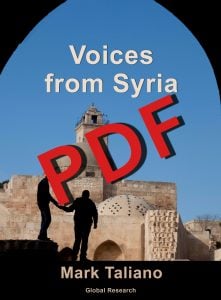
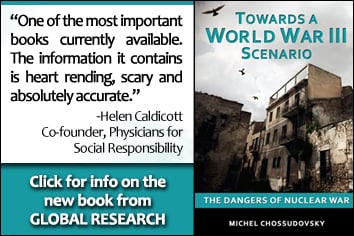 “
“


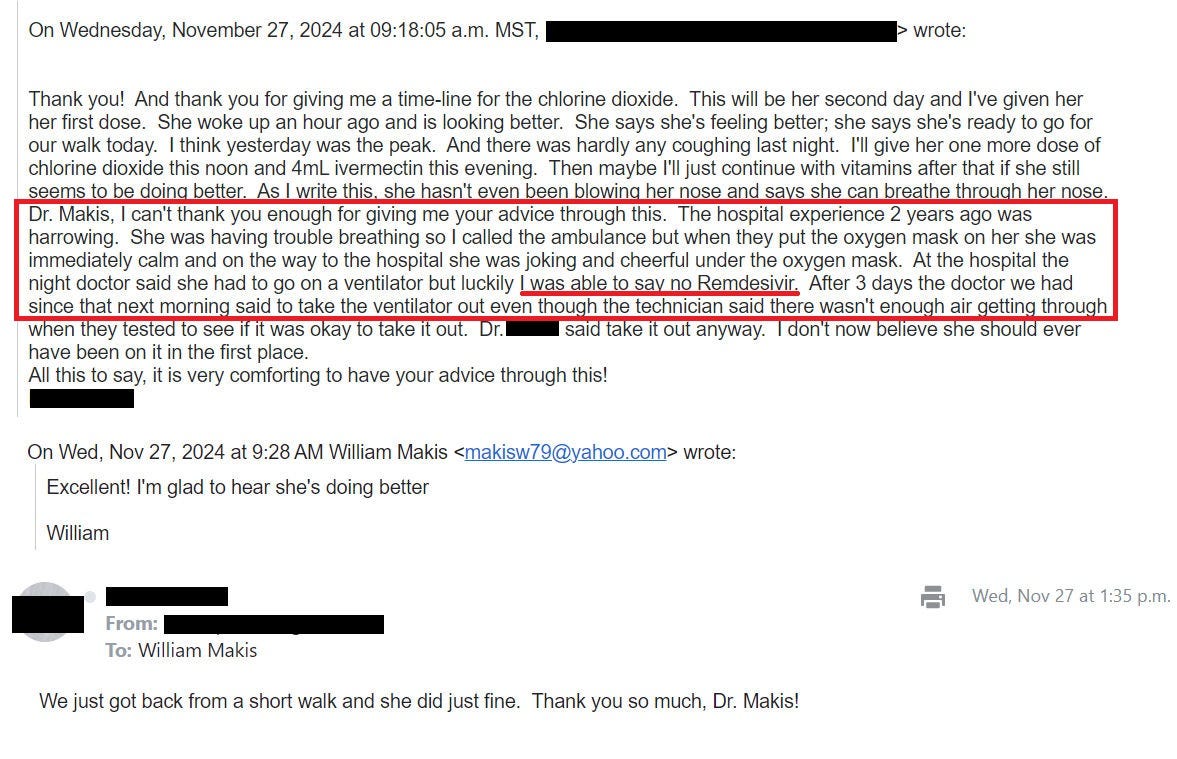


















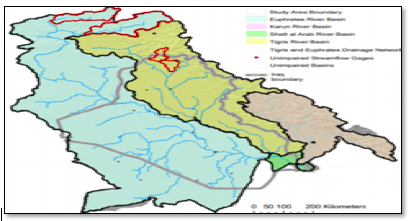














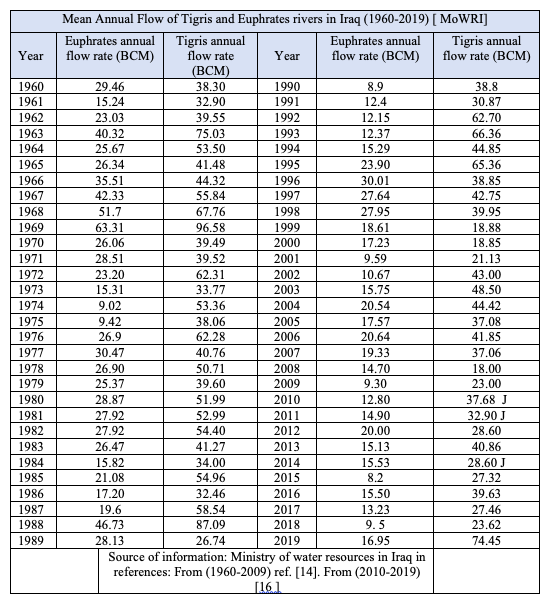


 Power Play: The Future of Food
Power Play: The Future of Food








 Most Censored Paper on Earth: The Lancet-Censored “Sudden Death” COVID-19 Vaccine Autopsy Paper Has Been Peer-Reviewed and Published
Most Censored Paper on Earth: The Lancet-Censored “Sudden Death” COVID-19 Vaccine Autopsy Paper Has Been Peer-Reviewed and Published There Never Was a “New Corona Virus”, There Never Was a Pandemic
There Never Was a “New Corona Virus”, There Never Was a Pandemic COVID mRNA Vaccine Injury: 5-11 Year Olds Are Dropping Dead From Heart Attacks
COVID mRNA Vaccine Injury: 5-11 Year Olds Are Dropping Dead From Heart Attacks Long-Range Missiles Targeting Russia – Last Minute Efforts to Stop President-Elect Trump From Taking Office? Peter Koenig
Long-Range Missiles Targeting Russia – Last Minute Efforts to Stop President-Elect Trump From Taking Office? Peter Koenig Video: The Mysterious Death of the Inventor of the PCR Test, Nobel Laureate Dr. Kary Mullis
Video: The Mysterious Death of the Inventor of the PCR Test, Nobel Laureate Dr. Kary Mullis RussiaGate 2.0. (2024-25): Donald Trump and the Manchurian Candidate. Regime Change in America
RussiaGate 2.0. (2024-25): Donald Trump and the Manchurian Candidate. Regime Change in America UK Government Report Admits AIDS Is Surging Among Covid-Vaccinated
UK Government Report Admits AIDS Is Surging Among Covid-Vaccinated 5G Danger: 13 Reasons 5G Wireless Technology Will be a Catastrophe for Humanity
5G Danger: 13 Reasons 5G Wireless Technology Will be a Catastrophe for Humanity Russia’s Final Warning to NATO – You’ll Get Your War, But It’ll be Over in 15 Minutes.
Russia’s Final Warning to NATO – You’ll Get Your War, But It’ll be Over in 15 Minutes. Trump’s Picks Are All Neocon Warhawks Ferociously Devoted to Israel
Trump’s Picks Are All Neocon Warhawks Ferociously Devoted to Israel German Government Admits There Was No Pandemic
German Government Admits There Was No Pandemic Here’s What Trump’s Peace Plan Might Look Like and Why Russia Might Agree to It
Here’s What Trump’s Peace Plan Might Look Like and Why Russia Might Agree to It The Next 60 Days Will be the Most Dangerous of Your Life
The Next 60 Days Will be the Most Dangerous of Your Life Endorse Robert F. Kennedy Jr: The Covid “Killer Vaccine”. People Are Dying All Over the World. It’s A Criminal Undertaking. We Call Upon its Immediate Cancellation!
Endorse Robert F. Kennedy Jr: The Covid “Killer Vaccine”. People Are Dying All Over the World. It’s A Criminal Undertaking. We Call Upon its Immediate Cancellation! Did Biden Really Authorize Long-range Strikes Deeper Within Russia? NYT Quoting “Anonymous Officials”
Did Biden Really Authorize Long-range Strikes Deeper Within Russia? NYT Quoting “Anonymous Officials” The BRICS’ 16th Summit in Kazan Revisited. “Not All That Glitters Is Gold.” “BRICS Nations Follow the Same Globalist Agenda.” Peter Koenig and David Skripac
The BRICS’ 16th Summit in Kazan Revisited. “Not All That Glitters Is Gold.” “BRICS Nations Follow the Same Globalist Agenda.” Peter Koenig and David Skripac The Smoking Gun: Who Started the War? Was It Russia or Was It US-NATO? NATO Confirms That the Ukraine “War Started in 2014”
The Smoking Gun: Who Started the War? Was It Russia or Was It US-NATO? NATO Confirms That the Ukraine “War Started in 2014” We Are Faced with the Extraordinary Event that Washington Chose to Go to War with Russia
We Are Faced with the Extraordinary Event that Washington Chose to Go to War with Russia US Elections 2024: The Mechanism of Fraud. Manlio Dinucci
US Elections 2024: The Mechanism of Fraud. Manlio Dinucci


 Rethinking Srebrenica
Rethinking Srebrenica The world is at a dangerous crossroads. In the post Cold War Era, East-West Dialogue has been scrapped.
The world is at a dangerous crossroads. In the post Cold War Era, East-West Dialogue has been scrapped. 






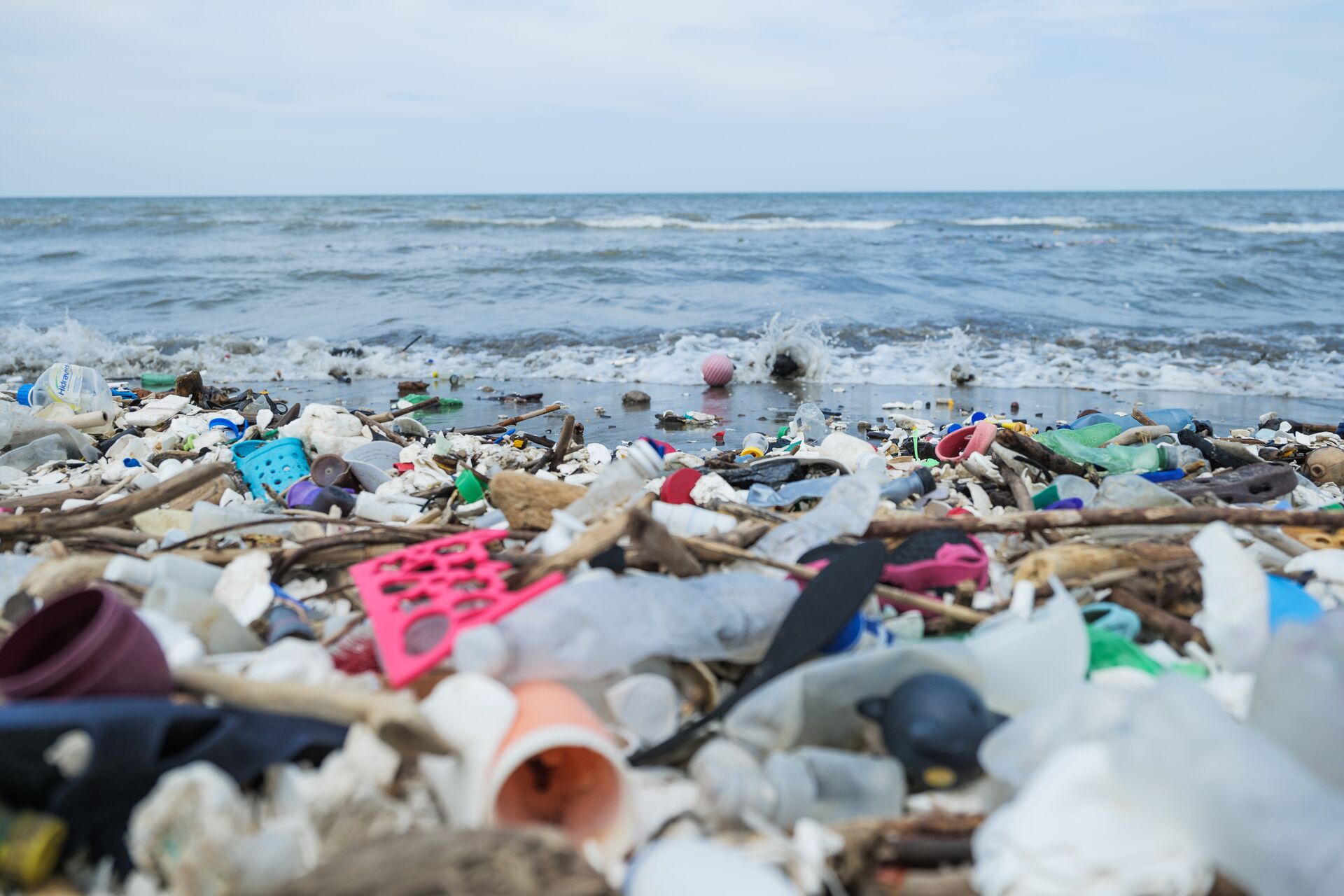






















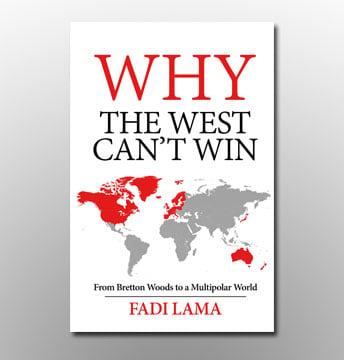








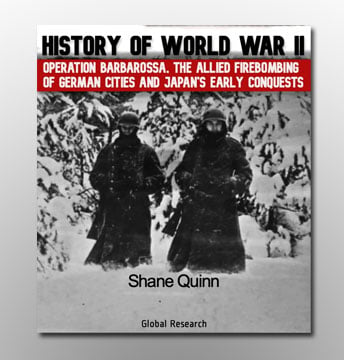




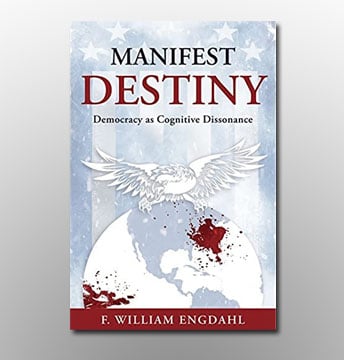





Thank you for your continued activism and truth-telling. A thankless task but the right thing.
You Sir are a Canadian hero. Thank you for your wonderful site and all the fine work you have done over the many years I have followed your work.